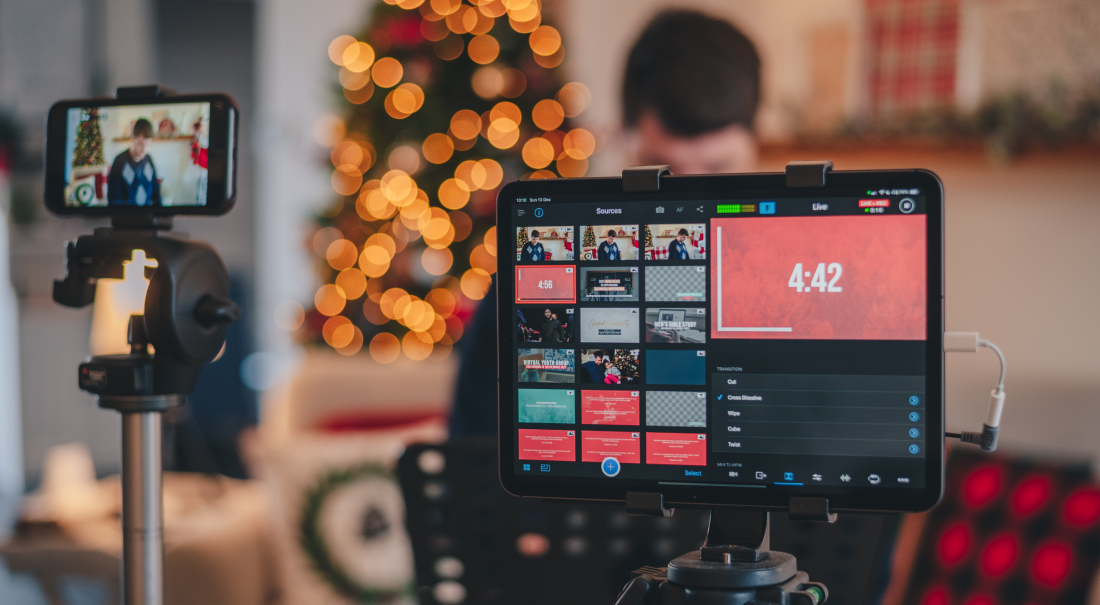
Last week we covered the basics of building a live video content strategy, the first step of which is to define the business goals for your live video. Today we’ll focus on this step in more detail — covering how to identify your business goals and how to define them properly. This will set you up for success as you craft the rest of your live video content strategy.
Effective and ineffective goals

Before we talk about what makes effective goals, it’s helpful to think about what makes ineffective goals. Consider, as an example, new year resolutions — because we’ve all been there, done that. Next month, people everywhere will be setting well-intentioned but vague goals for their lives: lose weight, be more grateful, save money, etc. Though such goals are noble, most people fail to achieve them because they’re not well-defined. How much more grateful is acceptable? If you lose one pound or save one dollar, did you succeed?
It’s tempting to set this same type of vague goal for your content marketing: build awareness, increase traffic, etc. But in both life and business, goals only work consistently if they follow some version of the SMART template: Specific, Measurable, Attainable, Relevant, and Timely. This template helps us turn “Be more grateful” into “List three things I’m thankful for every day for 3 months,“ and in doing so, brings us much closer to actually achieving our goals.
Types of business goals
In the process of setting SMART goals for your live videos, it is perfectly acceptable to start with vague goals and make them more specific. (In fact, this is likely the way most people do it.) So start by thinking about what you want your content to do for yourself or your organization. What are you hoping to achieve with live videos?
For most businesses, the answer comes back to finances in some way — increasing revenue is usually the end goal for marketing. But there are a number of preliminary goals you could set in order to increase revenue down the line. Here are a few examples:
- Increase traffic
- Increase leads
- Increase inquiries
- Increase conversions
- Increase customers
- Increase followers
- Increase purchases
Nonprofits or other organizations less focused on revenue may have a different list, but the gist is the same:
- Increase sign-ups
- Increase donations
- Increase subscribers
SMART-ifying your business goals
Once you’ve identifying your vague goals, place them into the SMART template and flesh them out. Take “Increase leads,” for instance:
- Specific: Which types of leads are you concerned with? Where do you typically get these leads and, therefore, where will you be focusing? Work this into your goal: “Increase web leads for our driveway-paving services.”
- Measurable: Here you talk numbers. “Increase” is vague if there’s no numerical aim. Add a percentage or a number: “Increase web leads for our driveway-paving services by 100%.”
- Attainable: Is the number you chose actually doable? Or is it more like wishful thinking? Lofty is OK, but it should be doable: “Increase web leads for our driveway-paving services by 10%.” That’s better.
- Relevant: There’s little point in increasing driveway-paving leads if that service line is booming and you have more work than you can keep up with or if it’s not paving season or if you make more money faster with gravel-laying, etc. Make sure that this goal makes sense for your business needs.
- Timely: When will you achieve your goal by? Will you increase leads over a year or a quarter? Consider what’s attainable and set a date. “Increase web leads for our driveway-paving services by 10% in quarter one.”
Your live video content strategy will usually include more than one such SMART goal, especially if you’re creating a strategy for your entire company or division rather than simply a product line, but as long as each goal follows this template, you’re well-positioned to move on to next steps.
Before you move on, however, make sure that you write down your SMART goals. If you don’t already have a document in which you are keeping your live video content strategy, now is the time to start one. Title your first section “Goals” and write down your goals in all their glory.
How goals inform your live video content strategy
The goals you came up with are fundamental for the rest of your strategy — identifying your audience, your niche, your topics, and more. For instance, based on your driveway-paving lead goal, you know you want to talk to homeowners, perhaps especially those in cold climates, who care about upkeep on their houses — or, perhaps, who baby their cars. You can presume that these homeowners may also be interested in other aspects of driveway, home, garage, and landscaping maintenance, so these are good potential video topics to start chewing on.
Live video will be an excellent way to reach them and answer their questions. Imagine being live on the scene for a driveway paving and answering viewers’ live questions about paving materials, home fixes, sealants, and more. Now imagine an entire series of such videos.
If you’re already wondering how you’ll evaluate whether your live videos helped you achieve your SMART goals, you’re asking the right questions. And though we’ll cover evaluating effectiveness in a later post, here’s your hint: Calls to action and tracking URLs are key! Calls to action — whether spoken in your videos, shown in your videos, or included with links below your videos (or all threee) — will prompt your viewers to take next steps, and using tracking URLs will ensure you know which business came from where.
Subscribe to the blog to ensure you get these future posts and follow us on Facebook to watch our own weekly live video show, #StreamSquad. If there are more topics you’d like us to cover, please let us know in the comments.
Subscribe to the blog
Sign up to receive notifications whenever a new blog post is published. You may unsubscribe at any time.

Share
About the Author

As Switcher's content strategy manager, Kate strives to answer the questions of new and expert livestreamers alike. She has spent her career in digital marketing and content strategy and now funnels that experience into helping others plan and create their own video content.
All posts by Kate Brannen Smith


